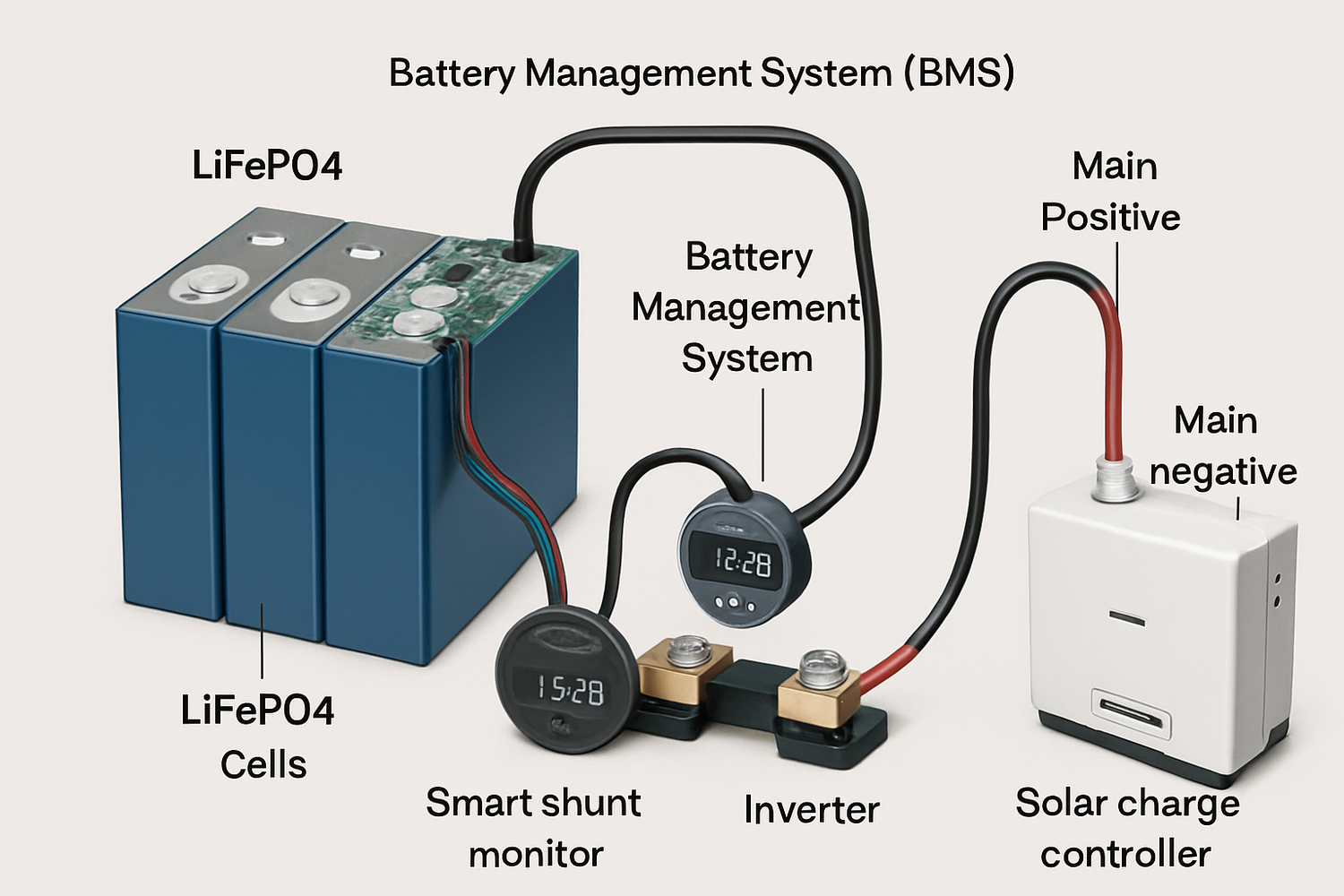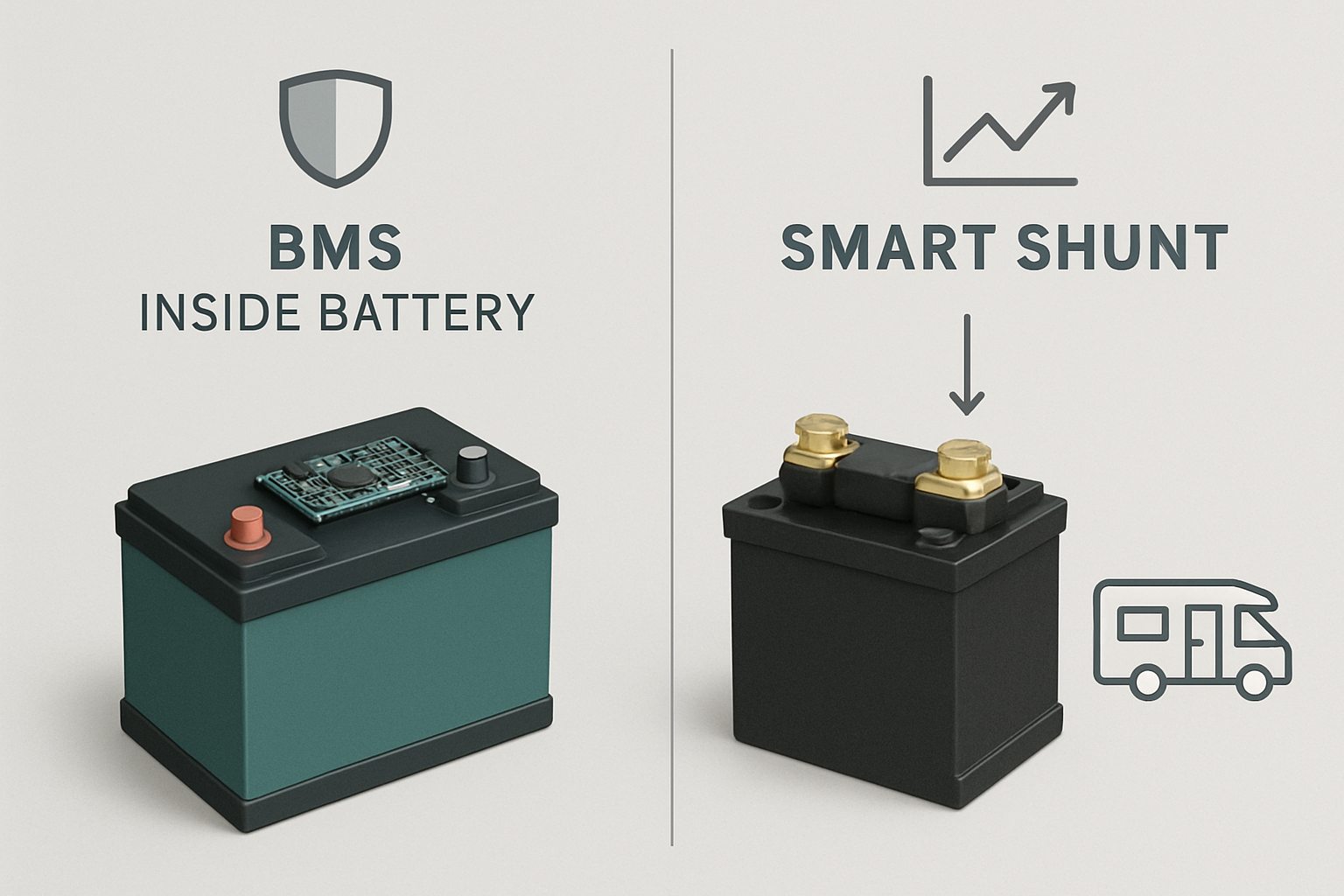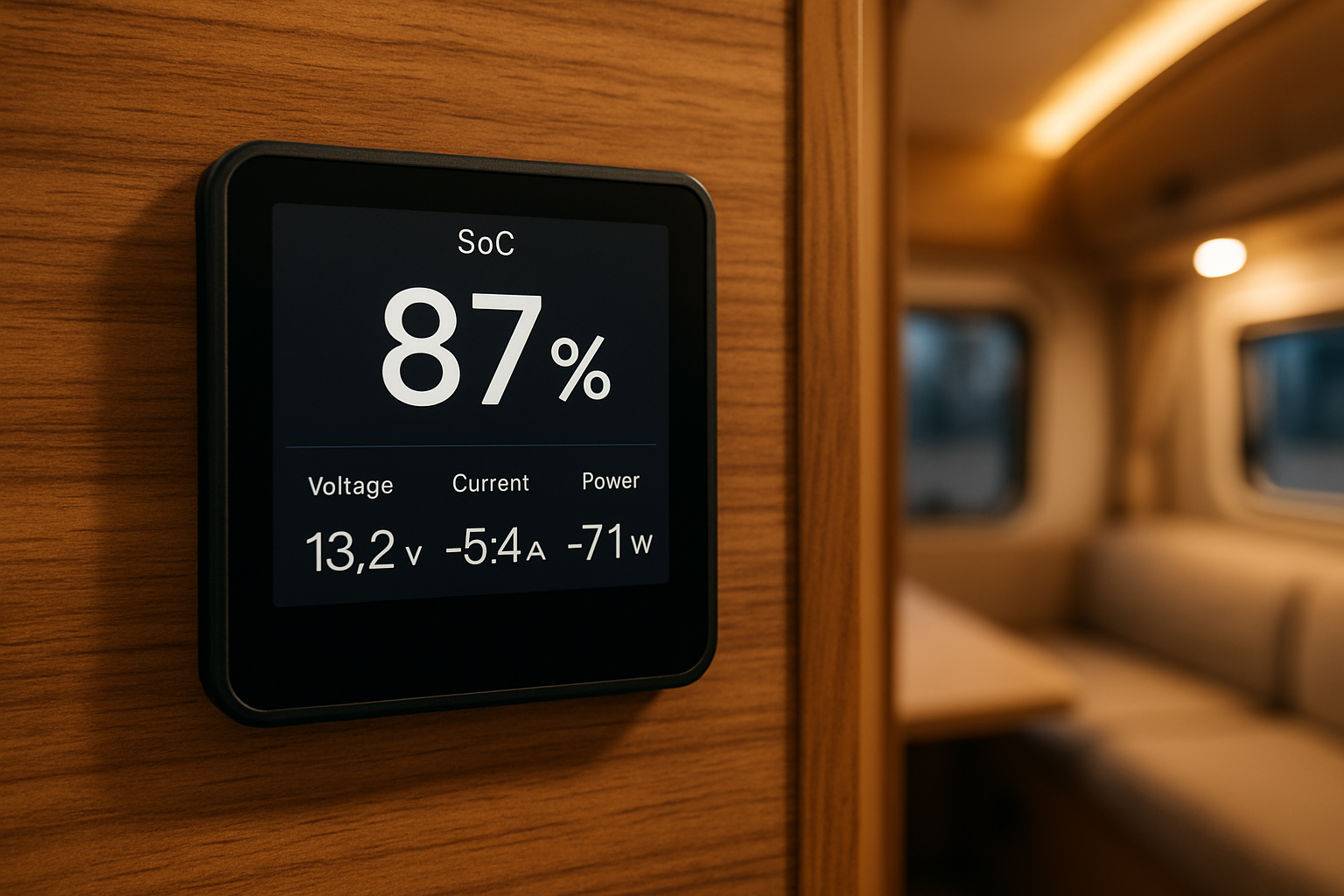Transitioning to a lithium battery pack in your RV is a significant upgrade for your energy system. These power sources offer longevity and efficiency. Yet, to truly capitalize on this investment, you need to move beyond simple voltage checks. Effective RV energy monitoring involves understanding your battery pack as a complete system, interpreting its data correctly, and managing its health proactively.
Understanding Your Lithium Battery Pack as a System
Your lithium battery pack is more than a single block of power. It's an integrated system where several components work together to deliver safe and reliable energy. Recognizing these interactions is the first step toward proficient management.
More Than Just Cells: The Core Components
At the heart of the pack are the individual lithium iron phosphate (LiFePO4) cells. These are the fundamental units that store energy. Protecting and managing them is the Battery Management System (BMS). The BMS acts as the brain, preventing over-charging, over-discharging, and extreme temperatures. It also performs cell balancing, a critical function for longevity. These components are housed in a protective casing, creating the complete battery pack.
The Flow of Energy: How Components Interact
Every amp of power that enters or leaves your battery pack is overseen by the BMS. During charging, the BMS ensures each cell is filled safely without exceeding its voltage limit. During discharge, it prevents any cell from dropping to a dangerously low voltage. This protective role is vital, but the BMS itself doesn't always provide the detailed, user-friendly data needed for day-to-day RV energy monitoring.
From Raw Data to Actionable Insights
A dedicated battery monitor, particularly a shunt-based one, translates the complex electrical behavior of your battery into clear, usable information. This data empowers you to make informed decisions about your energy consumption and system health.
Interpreting State of Charge (SoC) Accurately
LiFePO4 batteries maintain a very flat voltage curve, meaning the voltage stays relatively constant from 90% down to 20% charge. This characteristic makes voltage a poor indicator of the remaining capacity. A shunt-based monitor, installed on the negative battery cable, physically measures the current flowing in and out. It acts like a fuel gauge, providing a precise State of Charge percentage that you can trust for effective battery pack management.
Key Performance Indicators Beyond SoC
While SoC is crucial, other metrics offer deeper insights into your RV lithium battery troubleshooting and health.
- Voltage: While not ideal for SoC, system voltage confirms the battery is operating within its normal range (typically 12.8V to 14.6V). Consistently low voltage under load might indicate a problem.
- Current: Displayed in amps, this shows the real-time rate of energy flow. A high negative number indicates a significant power draw, while a positive number shows the charging current from your solar panels or converter.
- Temperature: The BMS monitors internal temperature, but an external sensor provides additional context. High temperatures can impact battery lifespan and performance, suggesting a need for better ventilation.
Proactive Troubleshooting and Health Management
With accurate data, you can spot potential issues before they become serious problems. Monitoring RV battery health is about recognizing patterns and understanding what they signify for your system.
Common Issues and Their Digital Symptoms
Your battery monitor is your primary diagnostic tool. Certain readings can point directly to specific issues within your RV's electrical system.
| Symptom (from Monitor) | Potential Cause | Actionable Step |
|---|---|---|
| Rapid SoC Drop Without Heavy Use | A hidden parasitic drain from an appliance or faulty wiring. | Use the monitor's amp reading to isolate circuits and identify the source of the unexpected power draw. |
| Failure to Reach 100% SoC | Incorrect charge controller settings or insufficient charging time. | Verify your solar controller and converter are set to a LiFePO4 profile with the correct absorption voltage. |
| Sudden BMS Shutdown (High Voltage) | Overcharging due to incorrect settings on a charging source. | Immediately check the voltage settings on all charging devices to prevent damage. |
| Sudden BMS Shutdown (Low Voltage) | Excessive load or complete depletion of the battery. | Reduce your electrical load and recharge the battery as soon as possible. |
The Importance of Cell Balancing
Even in a high-quality lithium battery pack, tiny differences between cells can cause them to drift apart in charge level over time. The BMS works to correct this by performing cell balancing, typically during the final stage of charging. If a pack is consistently undercharged and never reaches the balancing phase, this imbalance can grow, leading to a reduction in usable capacity. Ensuring a full charge periodically allows the BMS to maintain pack health.
Integrating Your Monitoring for Total RV Energy Control
Effective battery management is a cornerstone of a reliable off-grid power system. By combining the protective function of the BMS with the detailed data from a smart shunt, you gain complete control.
The Synergy of BMS and a Smart Shunt
Think of the BMS as the silent guardian and the smart shunt as the informative dashboard. The BMS works in the background, protecting your investment from electrical harm. The smart shunt brings the critical operational data to your fingertips, allowing you to manage your power usage intelligently. You need both for a truly robust system.
Building a Complete Energy Picture
Understanding your battery is key to evaluating your entire power system. For example, knowing your battery's real-time charge acceptance rate helps you assess how effectively your solar panels are performing. As detailed in the ultimate reference on solar storage performance, matching your solar array's output to your battery's needs is fundamental for efficiency. This integrated view allows you to optimize everything from solar panel angle to daily power consumption habits.
A Forward Look at Battery Technology
The field of energy storage is constantly advancing. According to the International Energy Agency's The State of Energy Innovation, research is pushing toward batteries with higher energy densities and faster charging capabilities. As technology evolves, having a solid understanding of your current system's performance provides a valuable baseline for future upgrades. Furthermore, the increasing volume of batteries brings recycling to the forefront. The IEA's report on The Role of Critical Minerals in Clean Energy Transitions underscores the growing importance of creating a sustainable lifecycle for battery materials.
Final Thoughts on Proactive Management
Properly managing your lithium battery pack is about shifting from a reactive to a proactive mindset. Instead of guessing your power status, you can use precise data to ensure reliability, extend the life of your battery, and travel with the confidence that your energy system is performing at its peak. This approach transforms your battery from a simple power source into a well-managed asset for all your adventures.
Frequently Asked Questions
How often should I calibrate my battery monitor?
Calibration, or synchronizing the monitor, ensures continued accuracy. It is good practice to fully charge your lithium battery pack until the charger stops, then manually set the monitor to 100% SoC. Doing this every few weeks, or if you notice any reading discrepancies, will keep your data reliable.
Can I rely solely on the BMS for battery information?
While the BMS is essential for protection, it is not a user-facing monitoring tool. Most BMS units do not have a screen or a user-friendly interface to display detailed metrics like SoC or real-time current draw. A dedicated shunt-based monitor is designed specifically for this purpose, providing the clear data needed for daily energy management.
What is the biggest mistake RV owners make with their lithium battery pack?
A frequent error is using charging equipment with settings designed for lead-acid batteries. LiFePO4 batteries require specific charging profiles. Using an incorrect profile can lead to chronic undercharging, which prevents cell balancing and can reduce the battery's lifespan and overall capacity over time.





Leave a comment
All comments are moderated before being published.
This site is protected by hCaptcha and the hCaptcha Privacy Policy and Terms of Service apply.